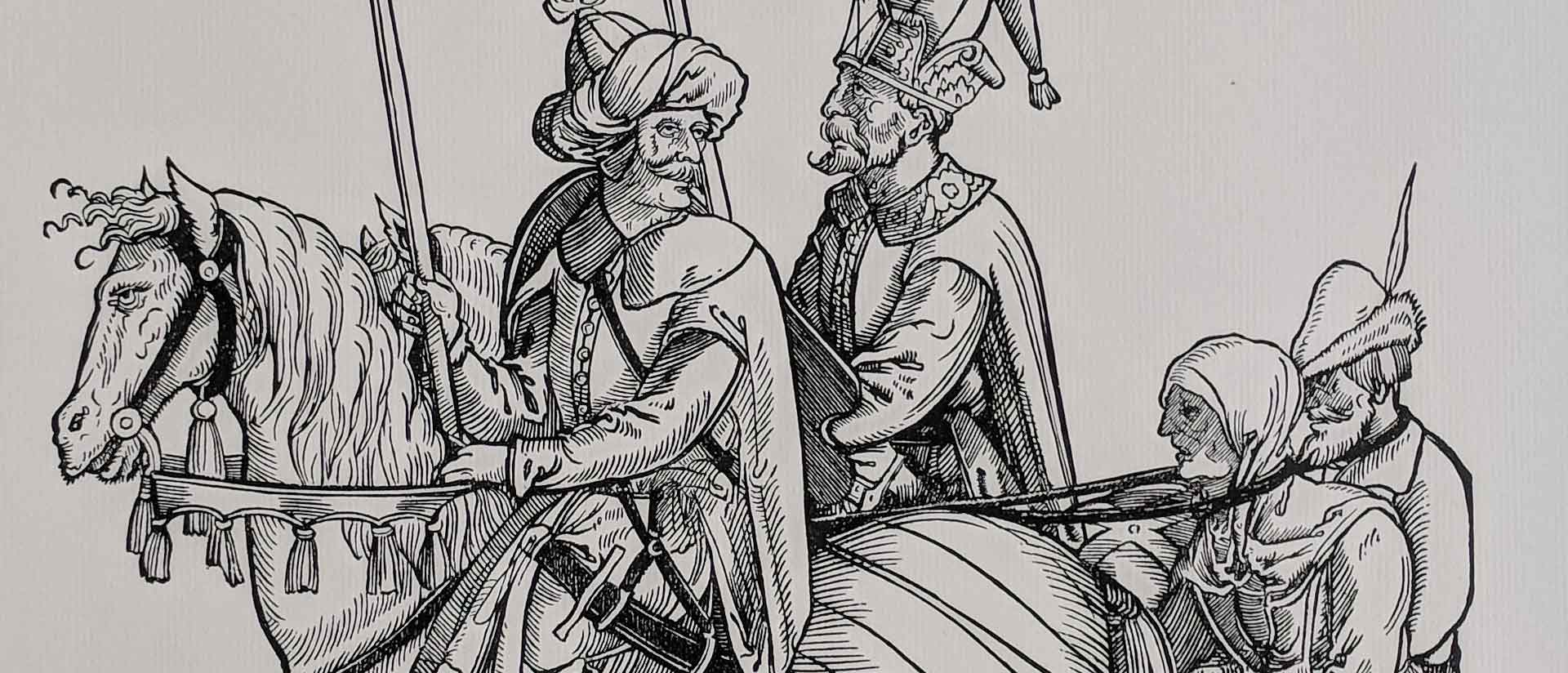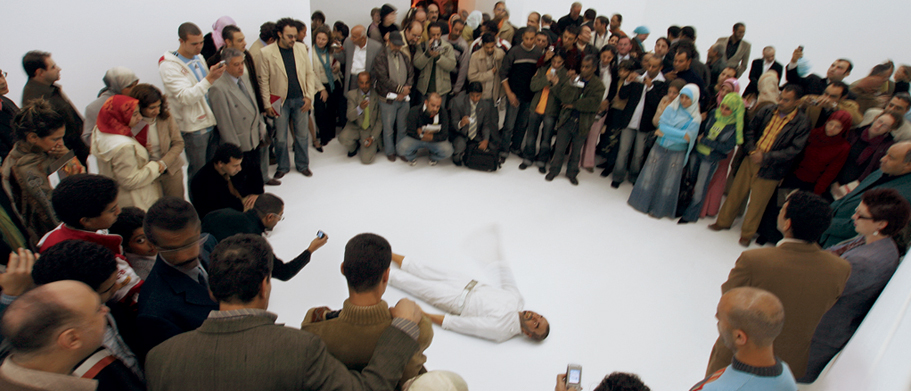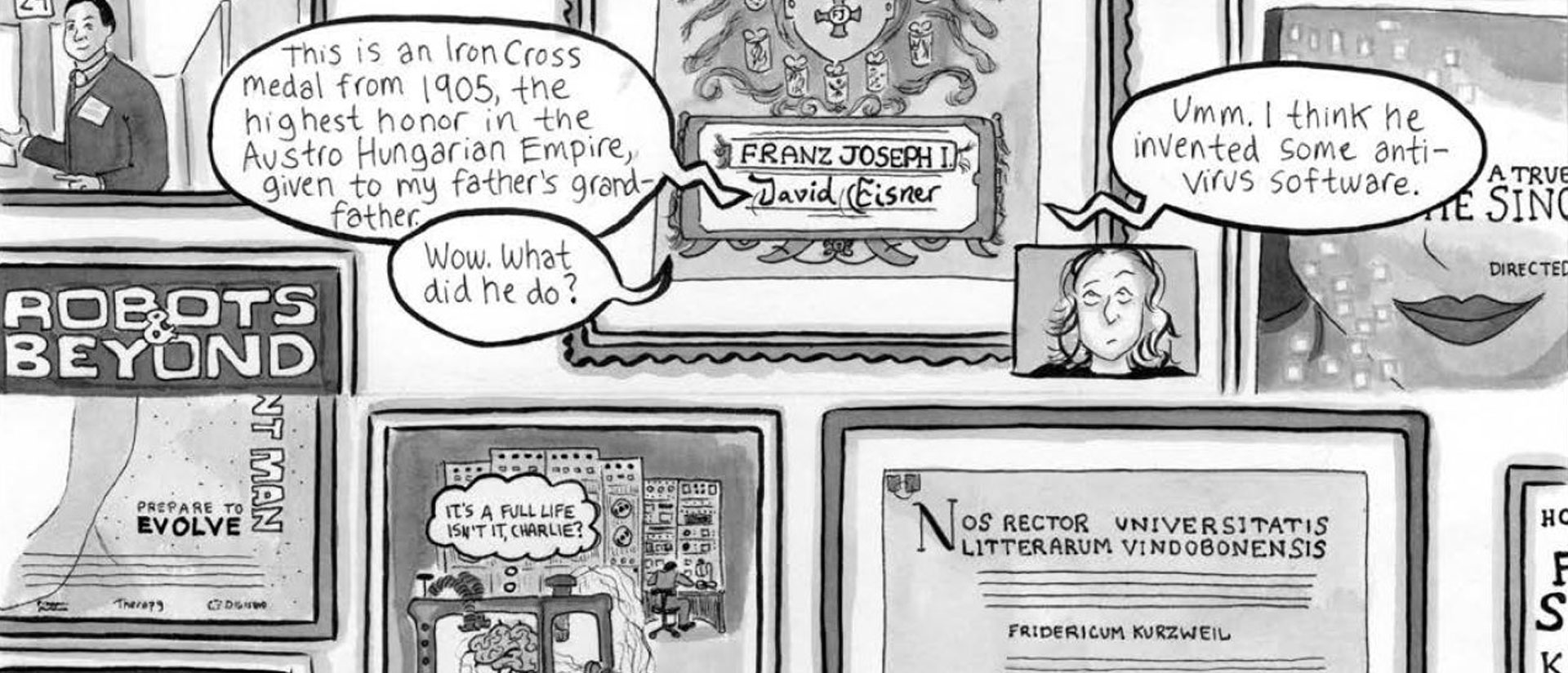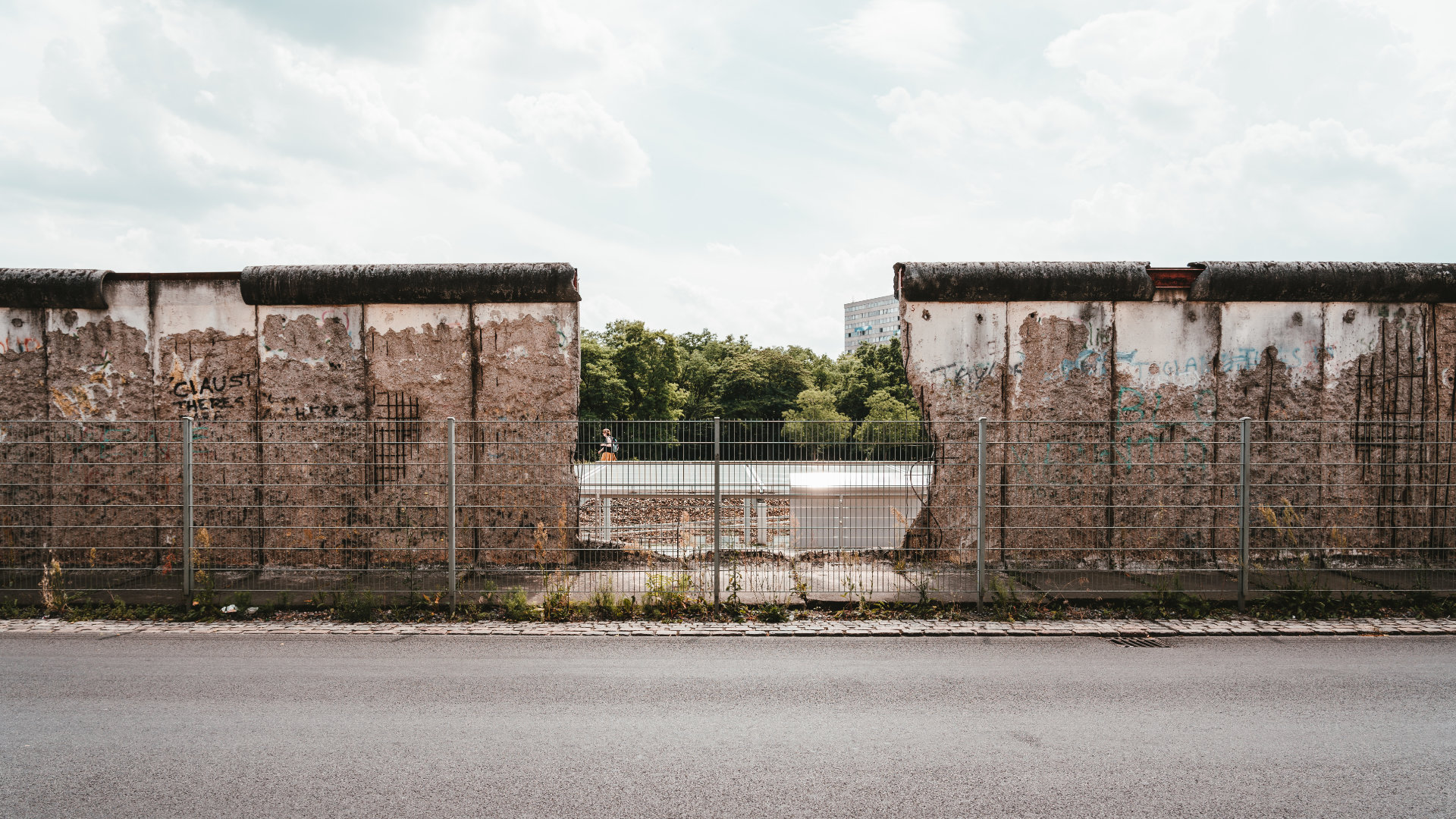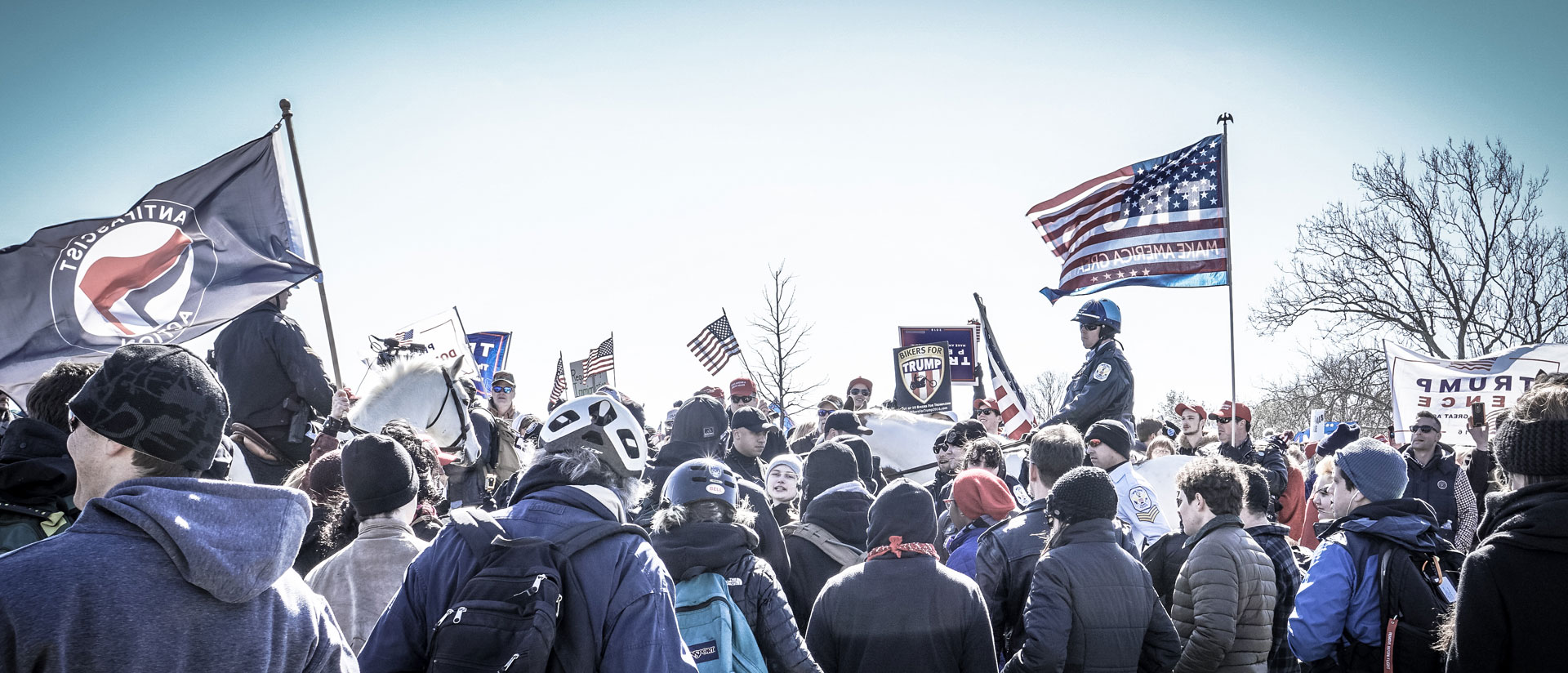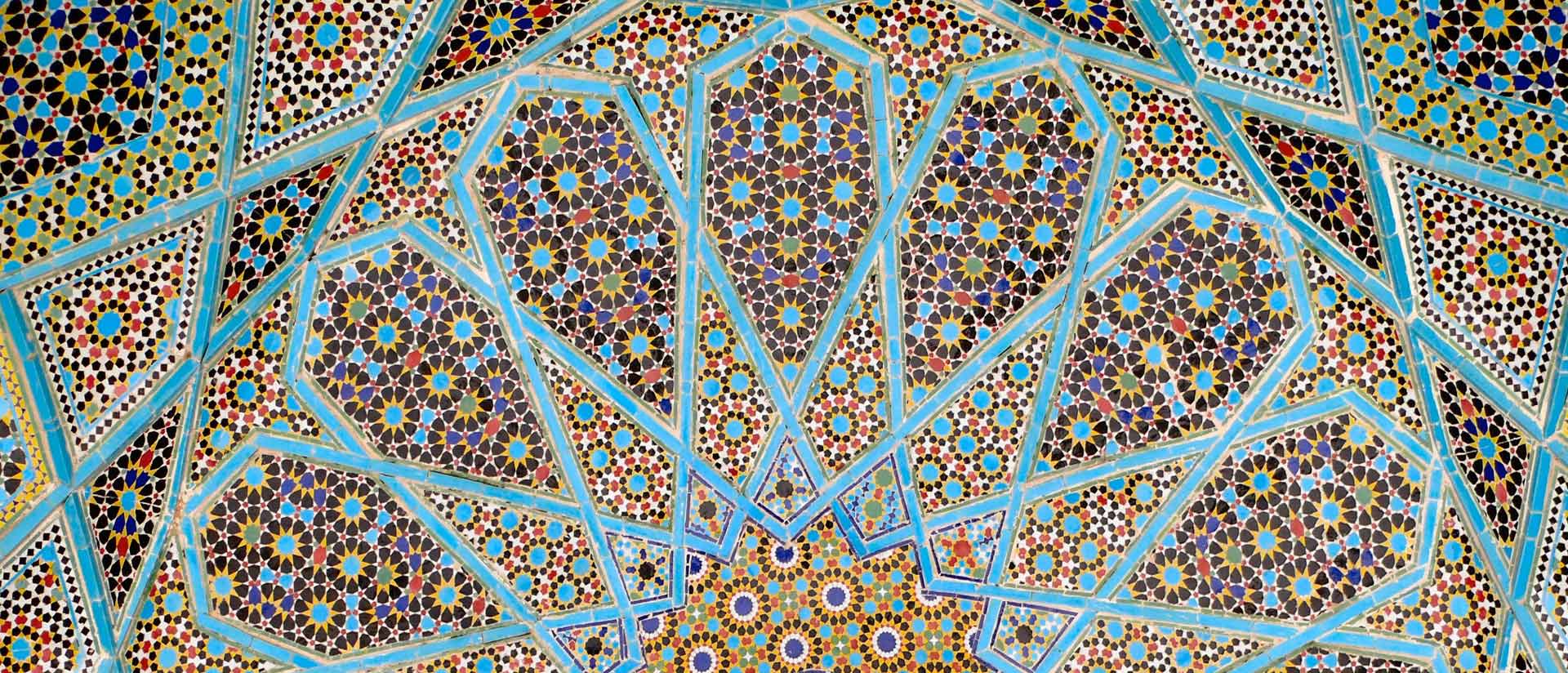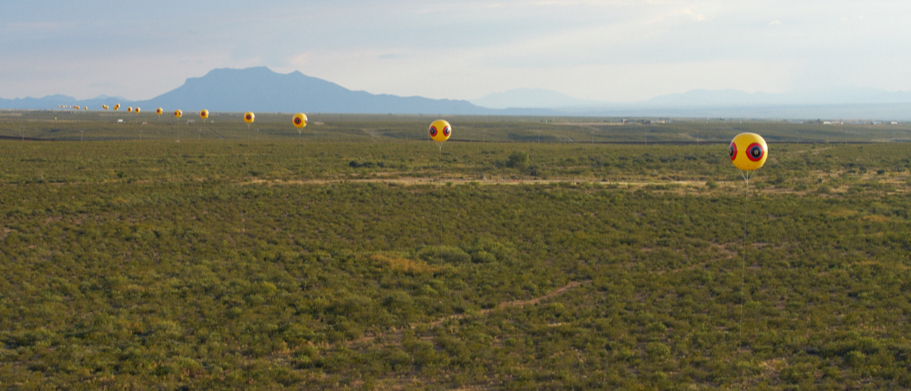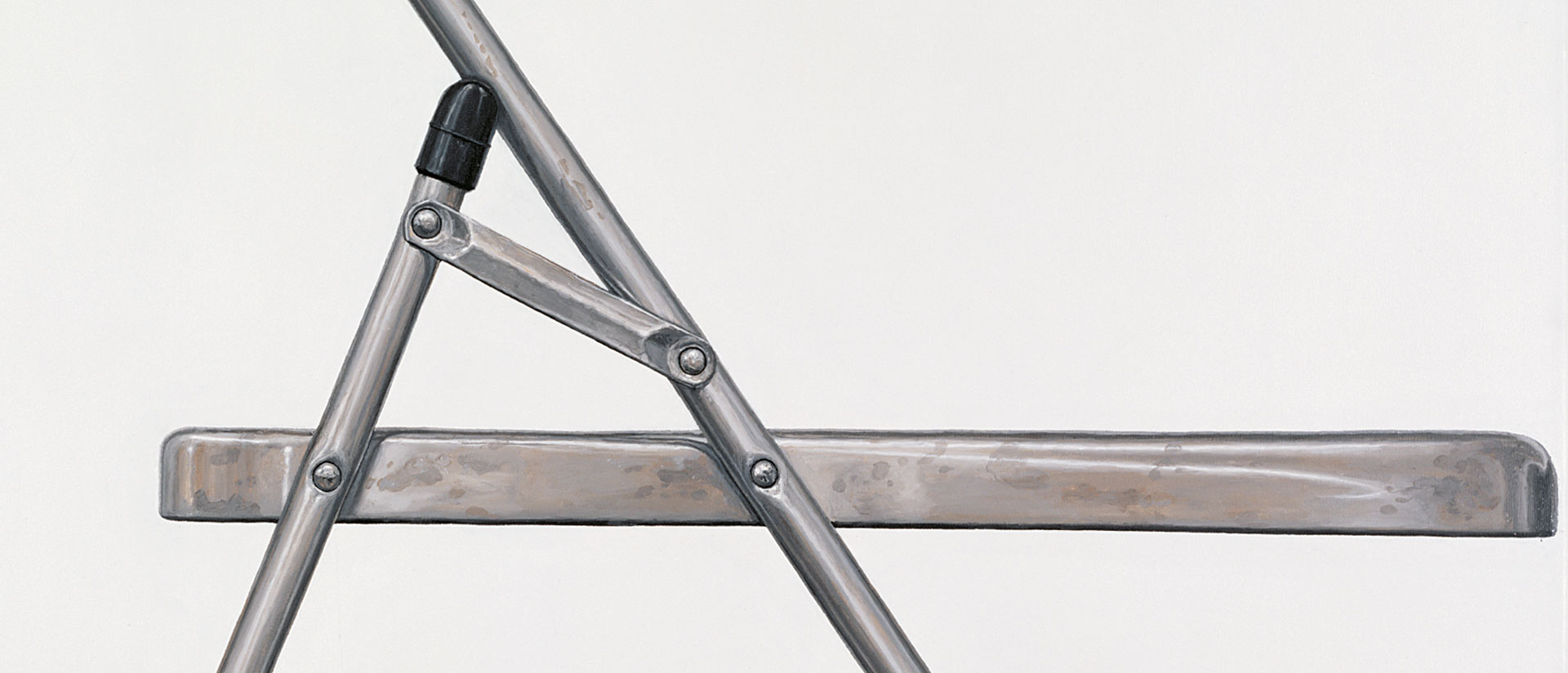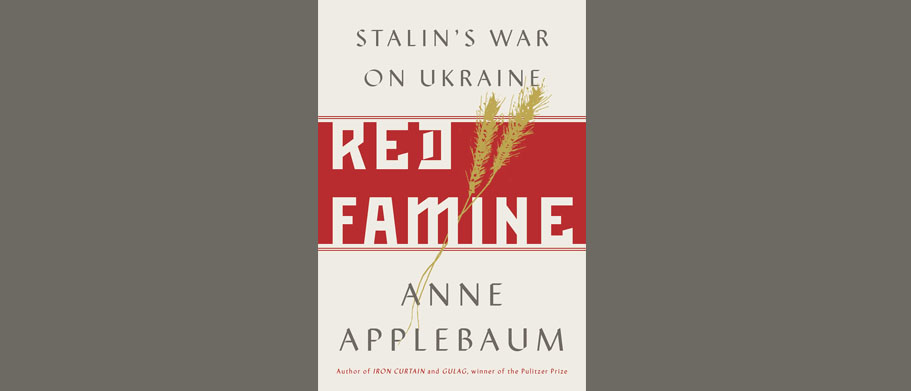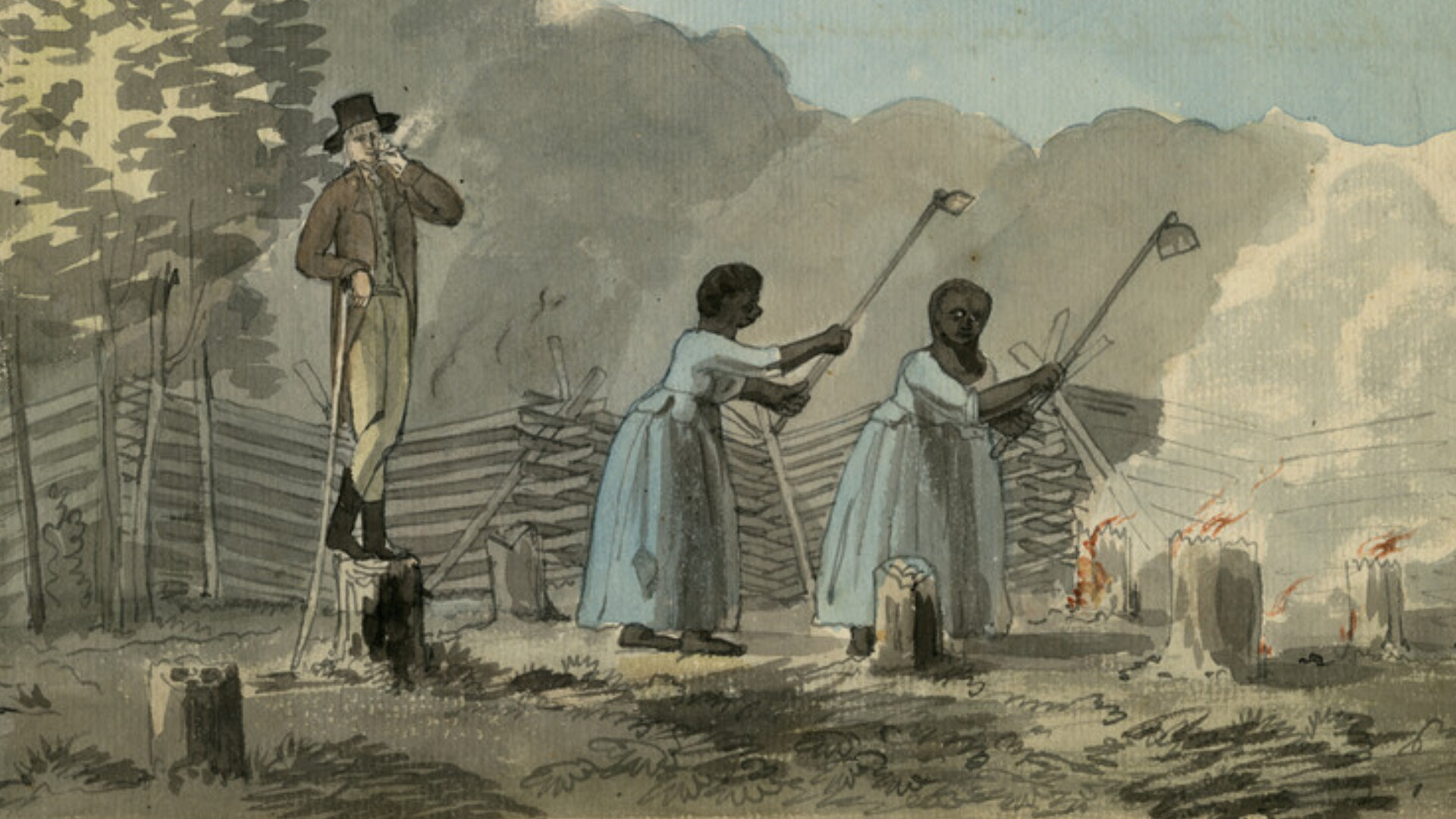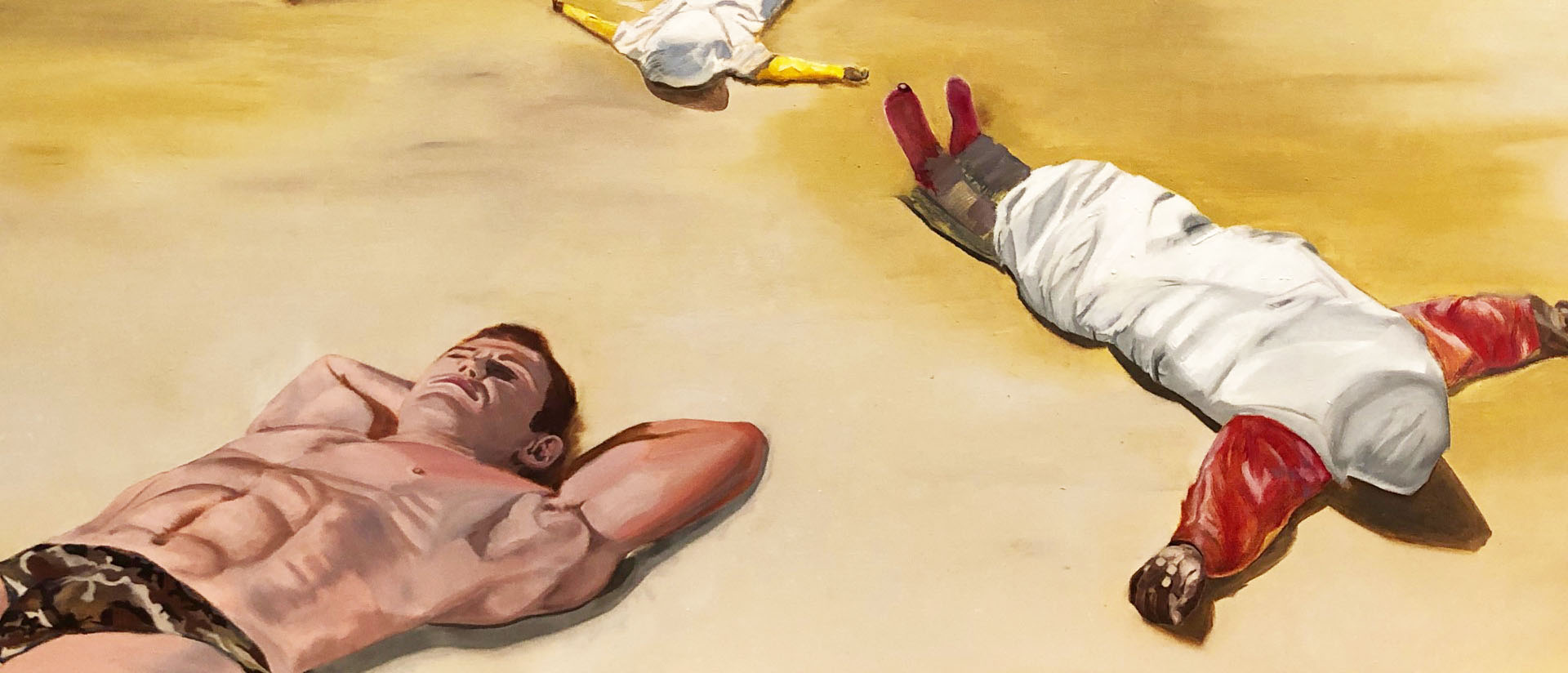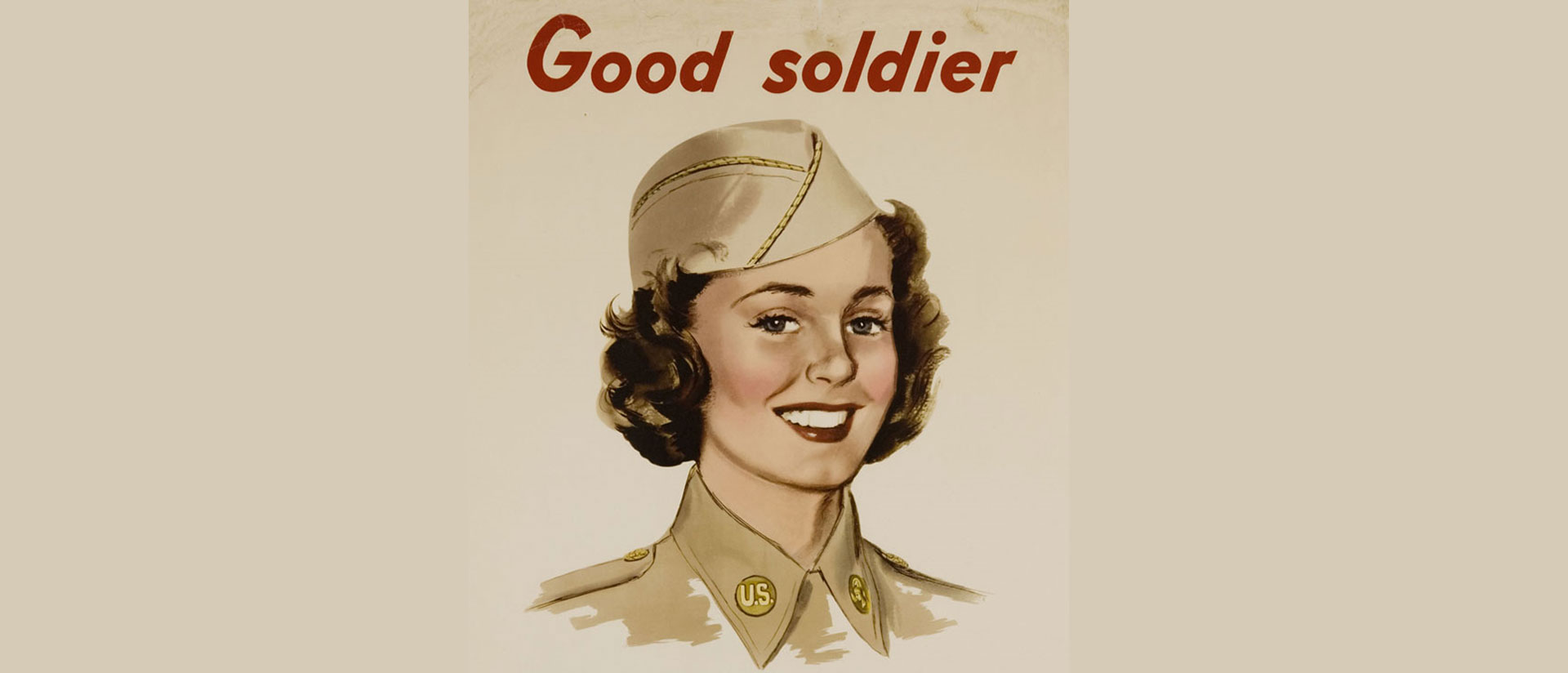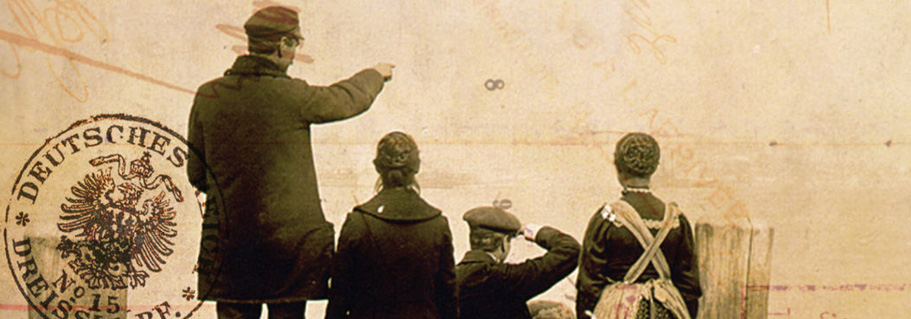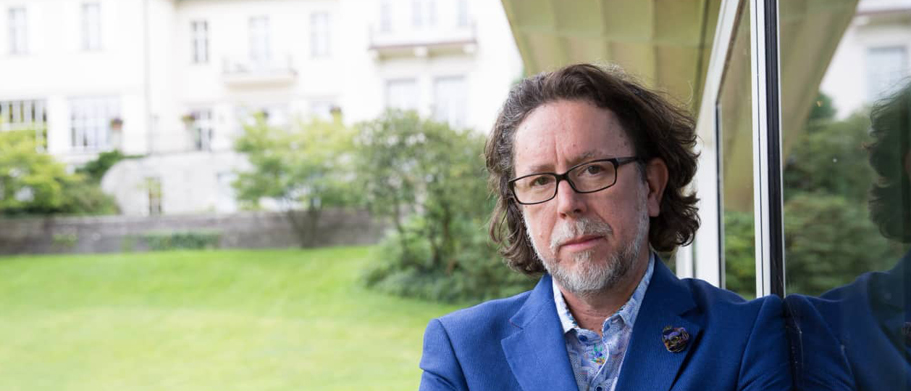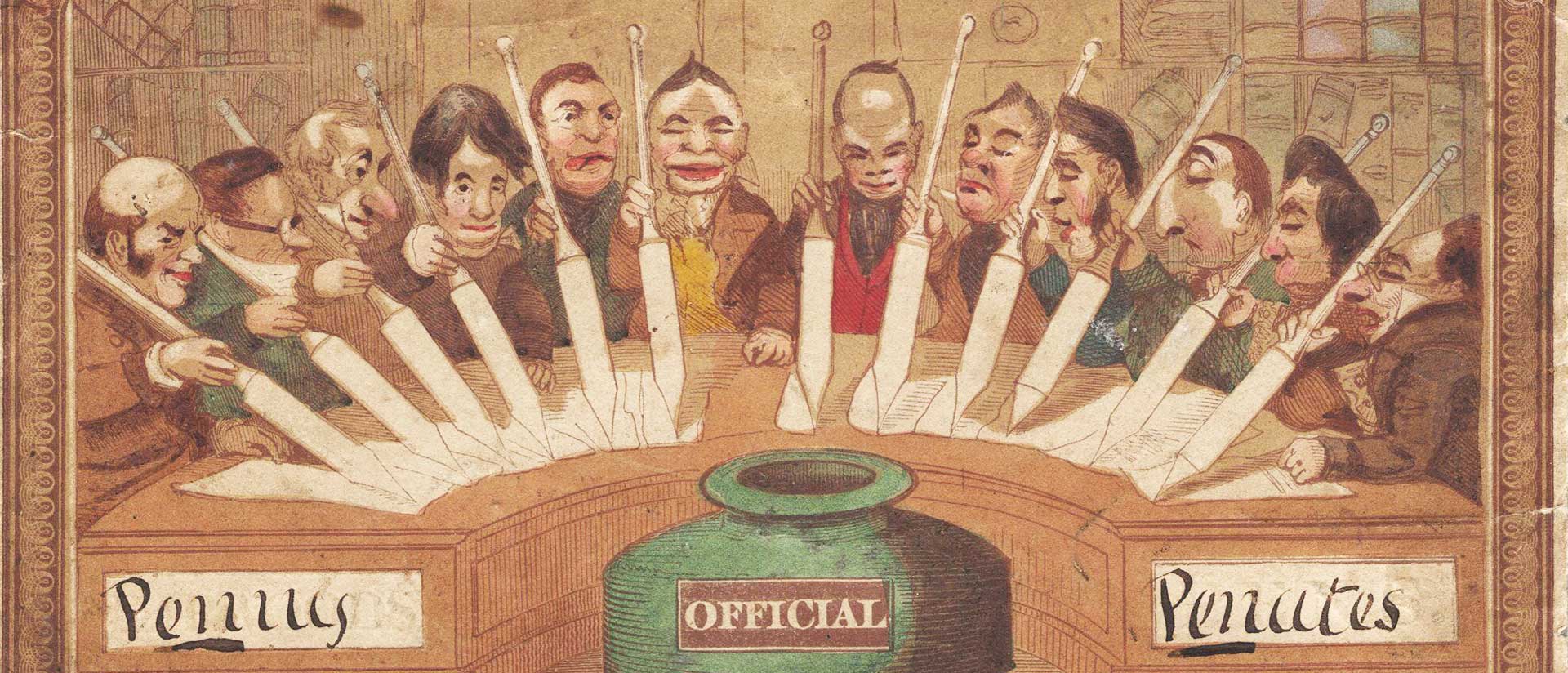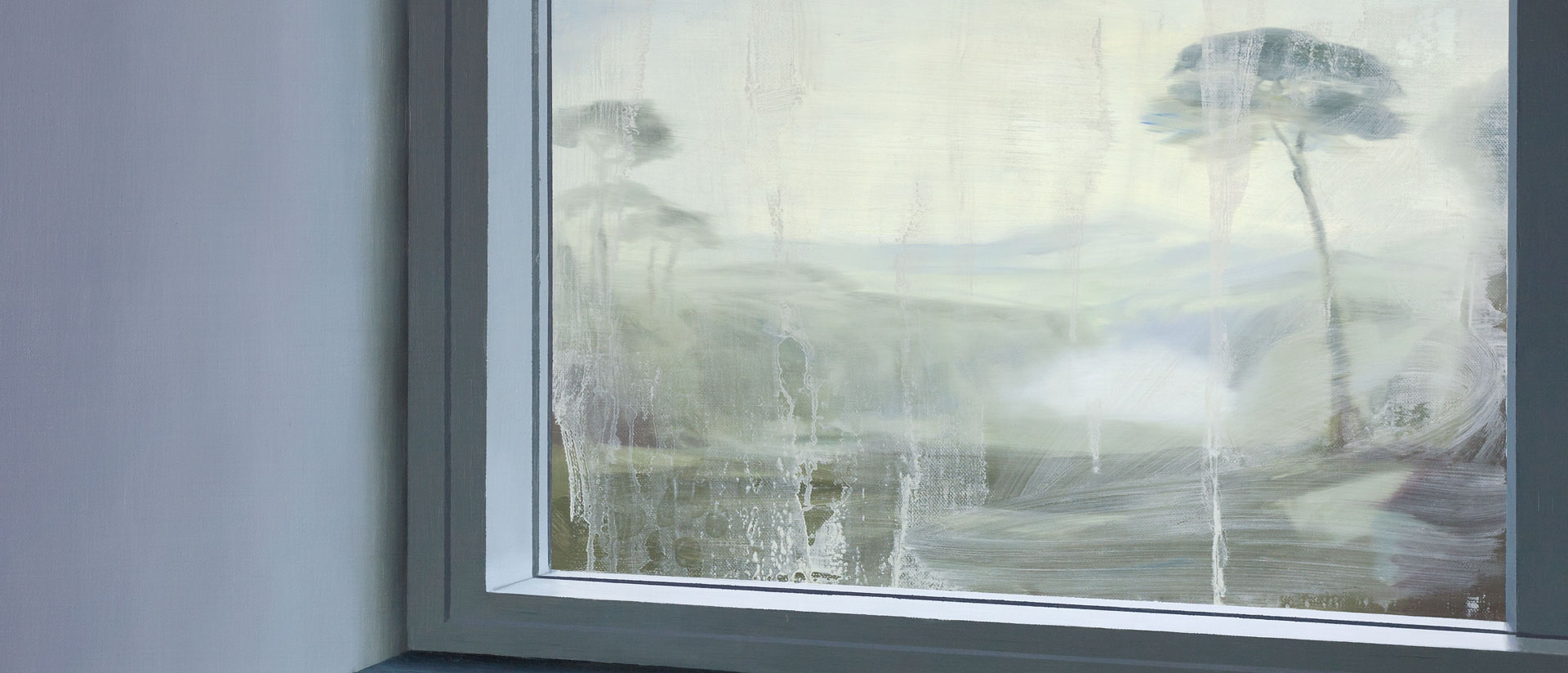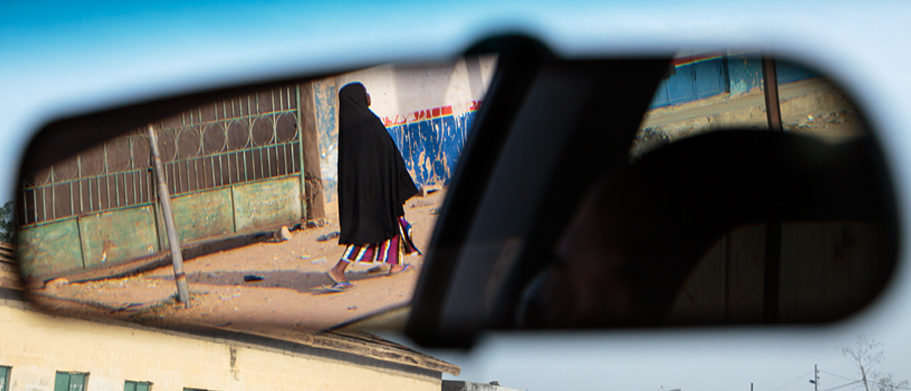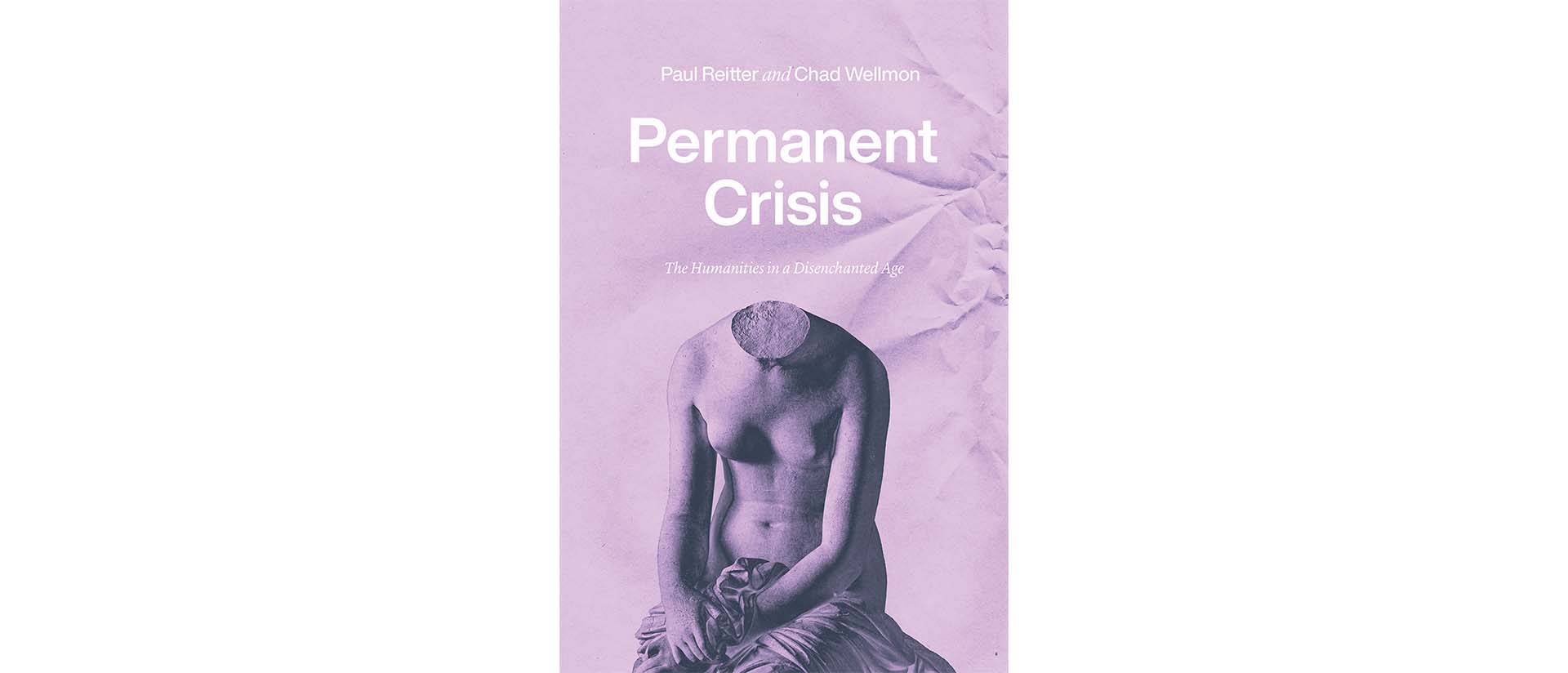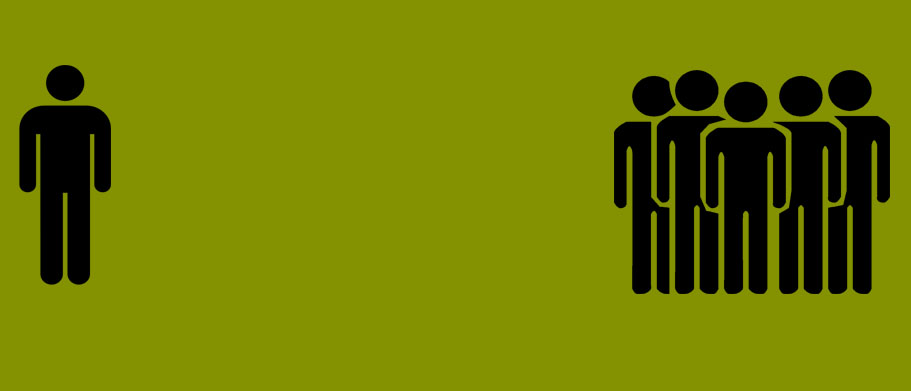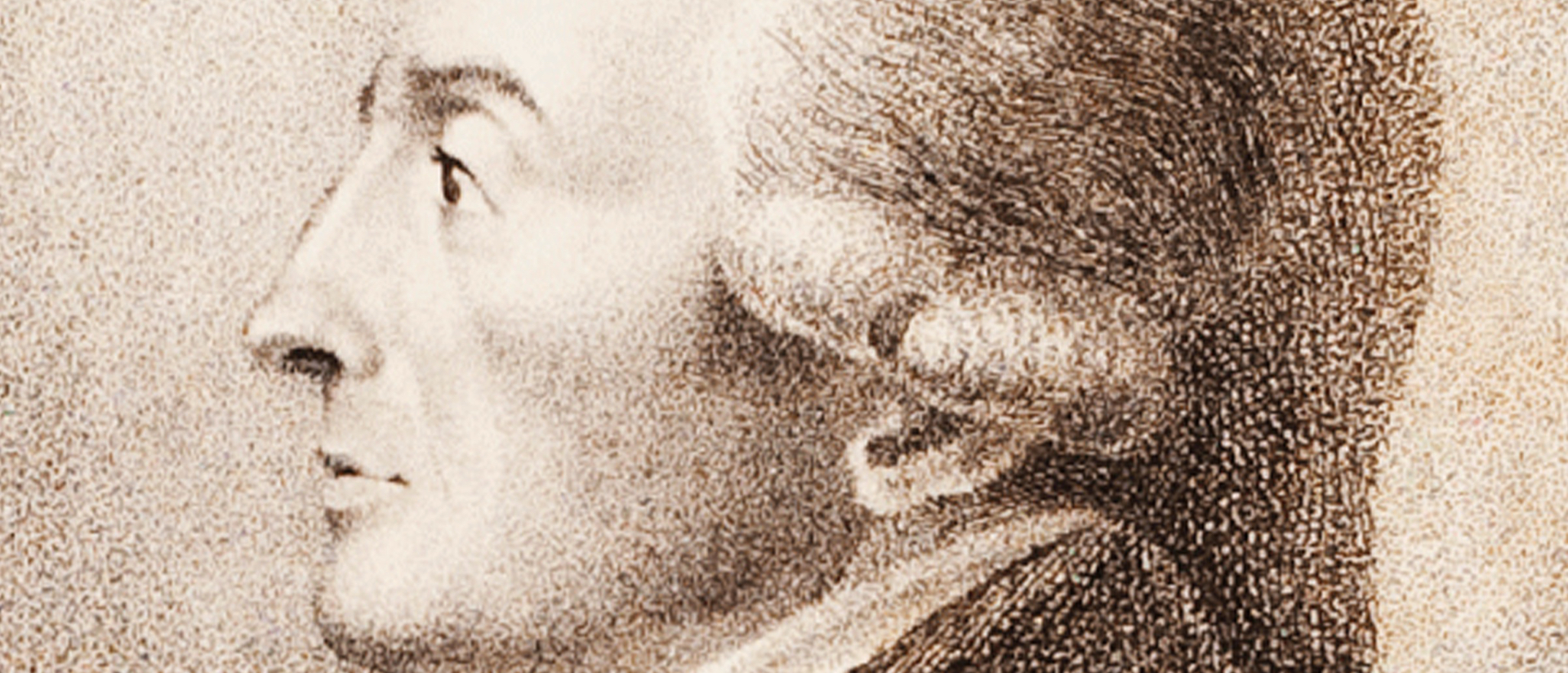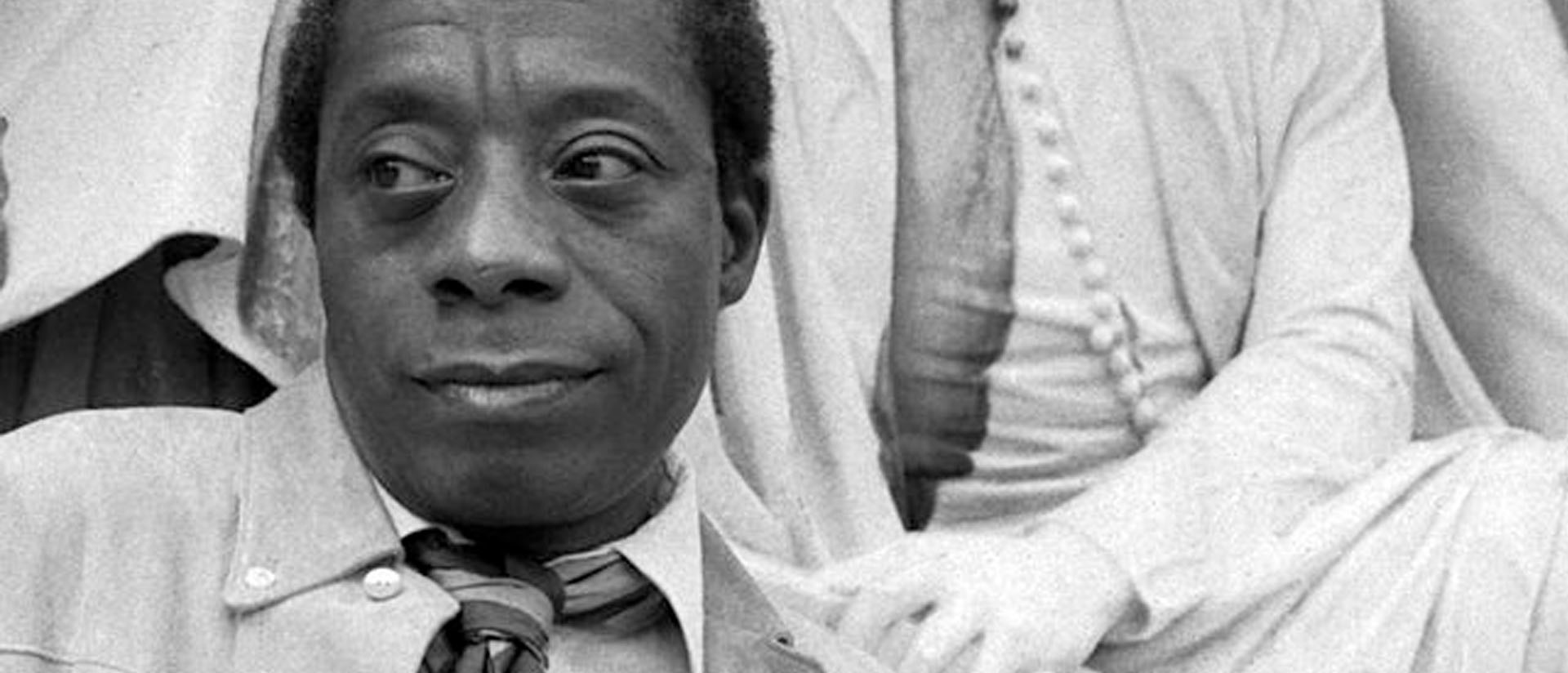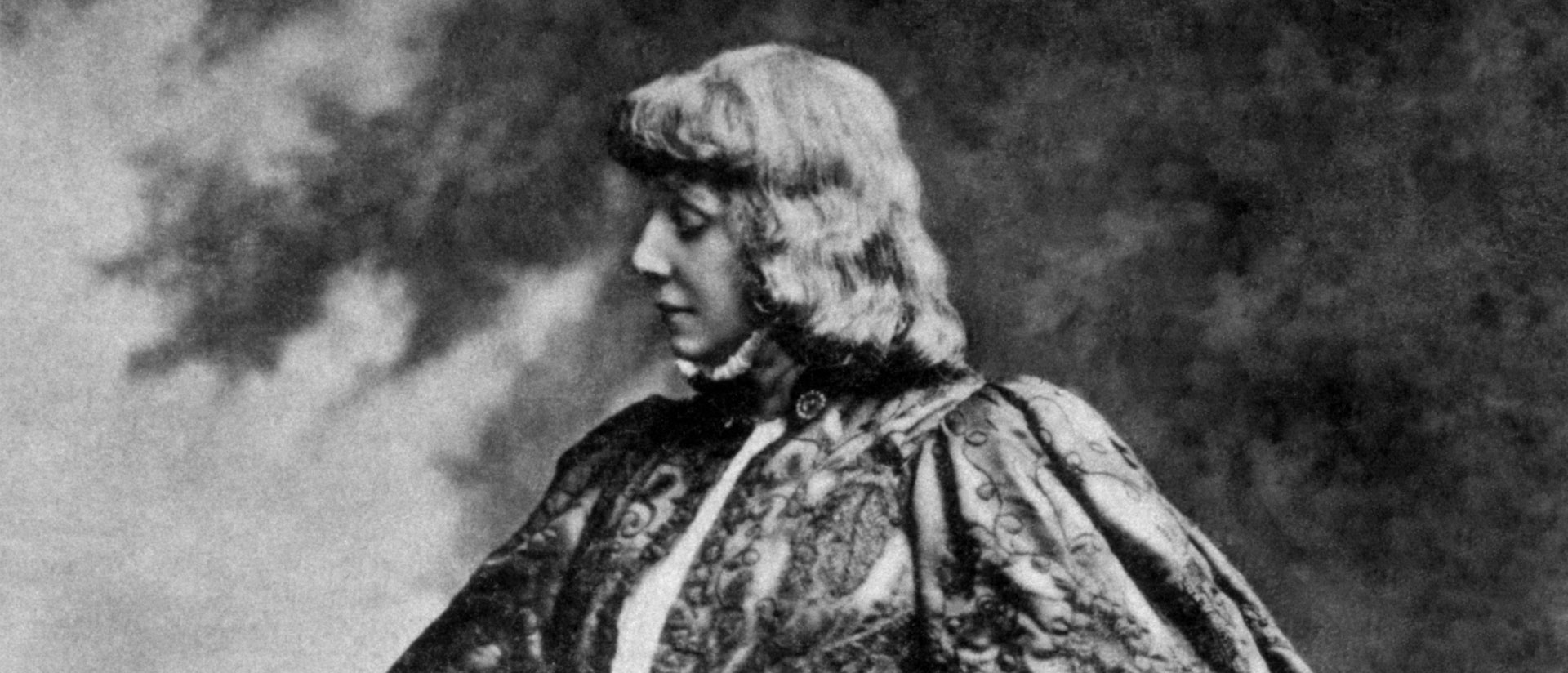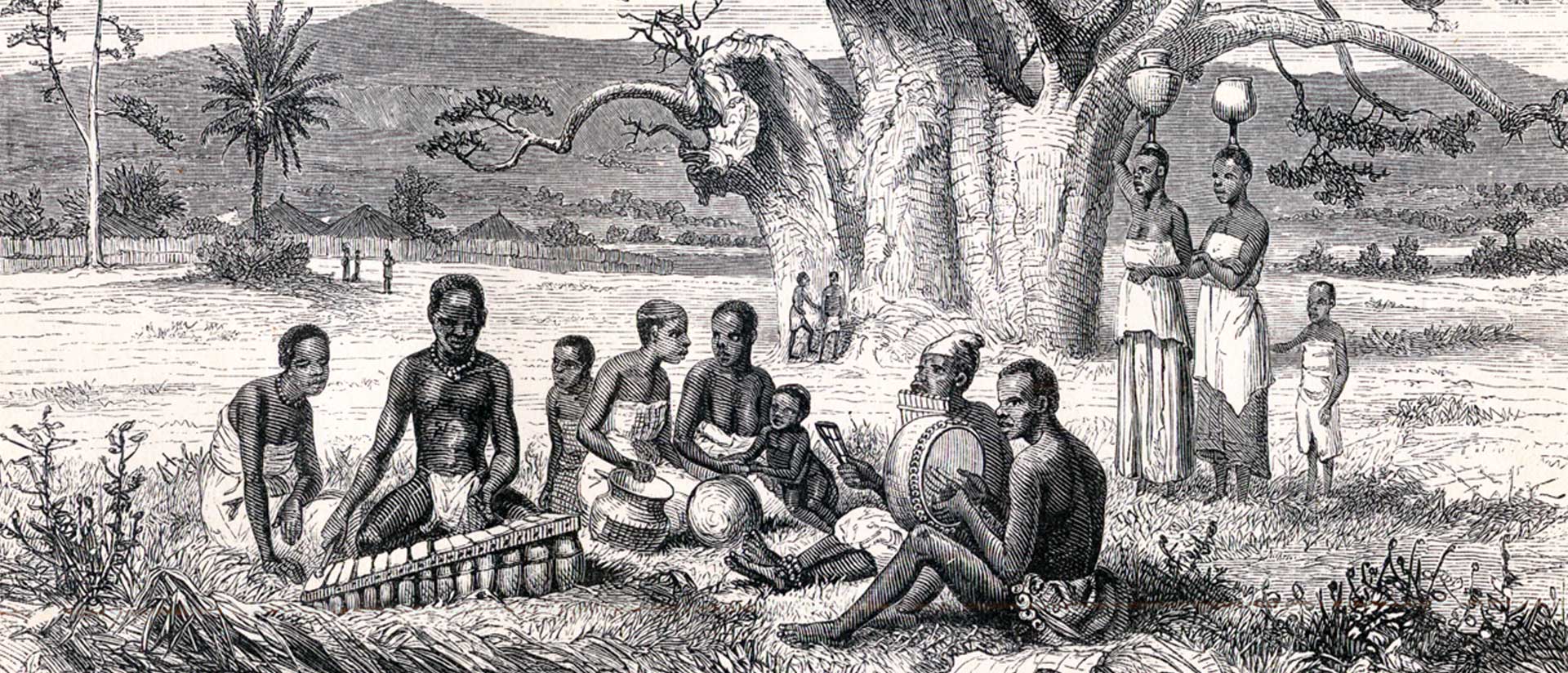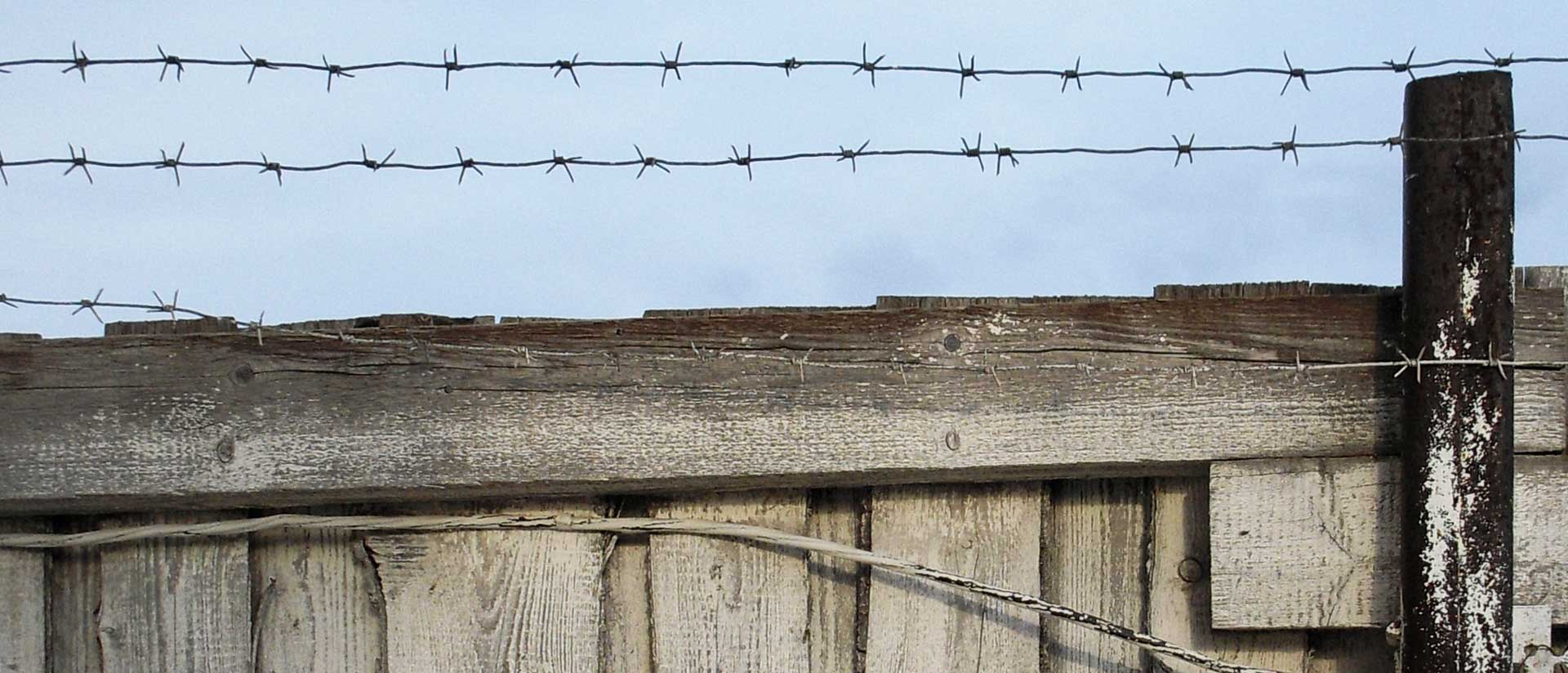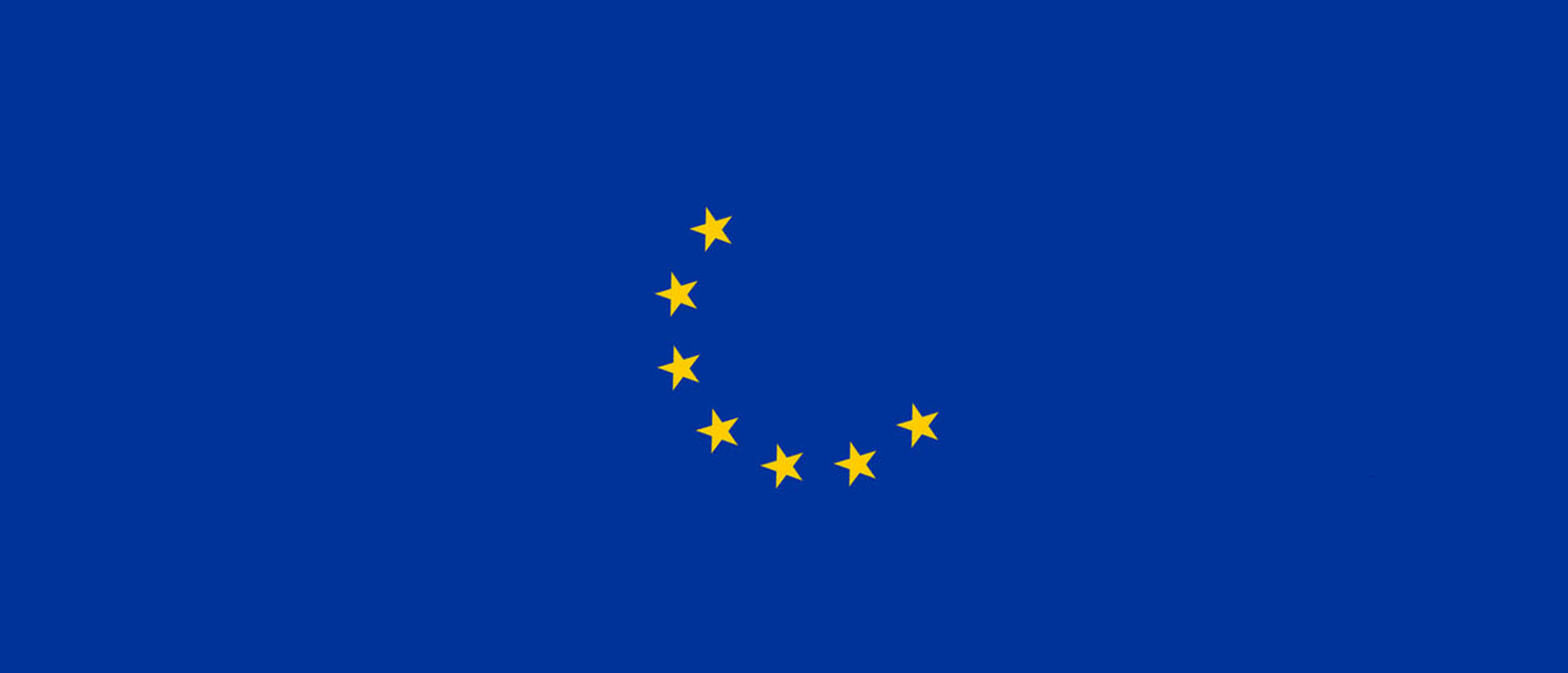
Crescent among the Stars
Is it harder being Muslim in Western Europe than in the United States?
by Nancy Foner
Islam has created greater challenges—and barriers—for immigrants and their children in Western Europe than in the United States. This may seem strange to say, especially in light of recent developments in the United States. But the fact is that Islam has become a greater source of contention and conflict in Europe and a more central divide between immigrants and the native majority population.
Of course, there is considerable anti-Muslim sentiment in the United States, with many cases of discrimination, bias incidents, and hate crimes, including vandalism of mosques and even occasional violence against Muslims, as well as state surveillance since the attacks of September 11, 2001. Most recently, anti-Muslim statements have become common in public discourse at the highest levels of American society. Not long after taking office, President Trump issued an executive order banning visitors from several Muslim majority countries.
Despite these challenges, Islam in the United States has not become a major cleavage between long-established residents and a large segment of the immigrant-origin population. Nor has it become as frequent a subject of public debate about immigrant integration and assimilation as it has in Western Europe. In other words, immigration debates in the United States have not been Islamicized or systematically connected with anti-Islamic rhetoric in the same way or degree to which they have been on the other side of the Atlantic. In the United States, hostility to Islam has, to a large extent, focused on security issues and on Islam as an external threat from outside the country. In Western Europe, although fears of terrorist networks are a component of anxieties about Muslims, civilizational threats—for example, threats to what are seen as core European liberal values of free speech, gender equality, and equal rights for homosexuals—have loomed much larger and become a prominent theme in political discourse and debates.
In the United States, hostility to Islam has, to a large extent, focused on security issues and on Islam as an external threat from outside the country. In Western Europe […] civilizational threats […] have loomed much larger and become a prominent theme in political discourse and debates.
Nor have cultural practices associated with Islam aroused the same kind of controversy in the United States as they have in Western Europe. In France, a 2004 law banned the headscarf in French public schools because it was seen to threaten the principle of laïcité, or state secularism. Everywhere in Europe, the black head-to-toe veiling— the niqab—that leaves only slits for the eyes, has been the subject of public debate, with France, once again, banning it in public places. Arranged (or “forced”) marriages among Muslims have also come in for considerable criticism in Europe, but in the United States they have led to hardly any public discussion or concern.
In addition to worries in Europe about the allegiances of second-generation Muslims to jihadist causes—and suspicions that they will commit acts of terrorism on European soil (as they have in Paris, London, and Brussels)—there is a widespread concern that a strong Muslim (or ethnic) identity competes with, or may even replace, feelings of belonging to the national community. Public debates in the United States about immigration are less focused on national identity and fears about cultural fragmentation than in Europe, where anxieties about Muslims’ identities are a larger issue.
Why is being Muslim a more significant marker of a fundamental social division for immigrants and their children in Western Europe than it is in the United States? One reason certainly has to do with the different demographics of immigration. A much larger proportion of immigrants and their children in Western Europe are Muslim (about 40 percent of all immigrants from outside the European Union). In the United States, Muslims are a tiny proportion of the immigrant population, an estimated four to eight percent, and only one percent of the total population, compared to five to eight percent in major European countries like France, Germany, and Britain. Also, Islam in Western Europe is associated with large immigrant groups, which are among the most disadvantaged minorities in terms of poverty, unemployment, and education. In the United States, a substantial proportion of Muslim Americans are well-educated and middle class.
A second reason why Islam is more problematic in Western Europe has to do with the place of religion in contemporary society. Americans are considerably more religious than Western Europeans. About half of Americans in a national poll a few years ago said that religion was very important in their lives, more than twice the proportion in Germany, Britain, or France.
Americans are considerably more religious than Western Europeans. About half of Americans in a national poll a few years ago said that religion was very important in their lives, more than twice the proportion in Germany, Britain, or France.
A secular mindset dominates in most Western European countries. In Western Europe, those who worship regularly and hold strong religious beliefs, including Christian ones, are a small minority, and claims based on religion have much less acceptance. When the religion is Islam, with its particular demands on how followers conduct their lives, these claims often lead to public unease, sometimes disdain, and even anger, and, not surprisingly, tensions and conflicts.
Europeans often feel that their societies should not tolerate religious practices or cultural customs that conflict with liberal secular norms and widely accepted views on, for example, the equal role of women. At the same time, they expect religious conservatives, including Muslims, to tolerate behavior that they may consider morally abhorrent, such as open displays of sexuality.
Americans, on the other hand, give more legitimacy to religiously based arguments in the public sphere. Political demands made on the basis of religion are a common feature of American life, put forward most vocally by evangelical (primarily white) Christians, who comprise about a quarter of the US adult population. As the scholarly literature on immigrant religion emphasizes, becoming more religious is a way of becoming American. It is often seen as a problem in Western Europe.
Third, and related, is the historical role of religion in society. The American history of religious pluralism, shaped by foundational principles of religious freedom and separation of church and state, and its success in incorporating Judaism and Catholicism into its predominantly Protestant national narrative—and into the fabric of mainstream institutions—provide a platform for the easier integration of non-Christian religions. In Western Europe, despite the breaking of many links between church and state and the high degree of secularism, the ways that Christian religions have been institutionalized and historically entangled with the state have made it hard for Islam to achieve equal treatment. (To be sure, European governments have begun to make some accommodations for Muslim religious practices such as granting permission to build mosques and, in some countries, establishing national or local “Islamic Councils.” Still, the institutional context continues to favor Christianity in many ways, and thus marginalizes Islam.)
In Western Europe, despite the breaking of many links between church and state and the high degree of secularism, the ways that Christian religions have been institutionalized and historically entangled with the state have made it hard for Islam to achieve equal treatment.
In Germany, according to the 1949 constitution, the state must be neutral in religious matters, but there are still strong links between church and state. Long-established Protestantism, Catholicism, as well as Judaism—but not Islam, the third largest religion—are recognized as public corporations entitled to federally collected church taxes and the right to run state-subsidized religious services and hospitals.
Throughout Europe, magnificent churches and cathedrals dot the landscape, but few mosques can compete in appearance. In France, for example, where the exclusion of religion from the affairs of state is the official ideology, the 1905 law on the separation of church and state designated all religious buildings built before then as property of the French state; the same law prevents the state from contributing to the construction of new ones. The state therefore owns and maintains most Christian churches and allows them to be used for regular religious services. Most French mosques are makeshift structures in converted rooms in housing projects, garages, or even basements.
Government support for religious schools has created other inequalities in Western Europe between long-established religions and Islam. In Britain and France, the state provides support for religious schools as long as they teach the national secular curriculum. While seemingly fair to all religions, this arrangement favors the established churches. The British government funds more than 6,500 Church of England and Catholic faith schools, but, as of 2017, only 27 Islamic faith schools in a nation of three million Muslims. In France, about 20 percent of French students go to religious schools (mostly Catholic) that receive the bulk of their budgets from the government, but, as of 2009, there were only two Muslim schools funded in this way.
As we look ahead, are there any signs of change? Predicting the future is always risky, but it is worth sketching out some factors that may, on the one hand, exacerbate and, on the other, reduce the barriers facing Muslim immigrants and their children in both the United States and Western Europe. In the United States, the historical record provides some optimism that eventually Islam will come to have a more established place. It may have taken more than a century, but America overcame the fear of the “Catholic menace” and widespread views of Catholicism as an anti-modernist religion incompatible with democracy. Perhaps in the decades ahead we will be talking about America as an Abrahamic civilization, a phrase joining Muslims with Jews and Christians. As the historian Gary Gerstle has written, “America, at present, is a long way from that formulation of American national identity, but no further than America once was from the Judeo-Christian one.” Moreover, in the context of the American color line—and a society where color-coded racial cleavages are more problematic than divisions based on religion—phenotypically white and light-skinned members of the Muslim second generation who are economically and educationally successful and culturally assimilated may come to be seen and accepted as part of the dominant white population.
In both the United States and Europe, it is likely that, over time, more second-generation Muslims will have routine contact and interactions with long-established Europeans and Americans in a range of social settings, including workplaces, schools, and universities. This kind of intermingling can increase comfort with people of Muslim background, reduce prejudice, and lead to friendships and even intermarriage.
In Western Europe, as the number and proportion of the second and third generations rise, the participation of Muslims in mainstream European political and economic life, including the upper tiers of the occupational ladder, is bound to become more common and increasingly normal. Those in the European majority population are also likely to grow more accustomed to Islamic religious observance, particularly as Islam becomes more Europeanized, or, given internal divisions within Islam, “European Islams” take root. As members of the second generation take over religious associations and institutions, many will strive for a more liberal version of Islam than their parents practiced, and that is viewed more positively by the wider population. Already, a substantial number of the second generation holds views in sync with mainstream Western ideas about the separation of state and religion, and gender equality in education and the labor market.
As members of the second generation take over religious associations and institutions, many will strive for a more liberal version of Islam than their parents practiced, and that is viewed more positively by the wider population.
But some dark clouds loom on the horizon. In the United States, unforeseen issues, events, and controversies may arise that significantly increase hostility to American-born Muslims and political attacks on them. Who, after all, would have predicted the September 11 attacks on the twin towers of New York’s World Trade Center? Or the extent to which Republican presidential hopefuls in the 2016 campaign would use anti-Muslim rhetoric to rally support? Still, if Muslim Americans’ rights to religious freedom are threatened, they have the Constitution as well as civil liberties advocates and liberal politicians on their side. Also, the small size of the US Muslim population makes the group seem less threatening, even though this small size can contribute to the general population’s lack of personal exposure to Muslims, which can lead, in turn, to an easy fueling of negative sentiments toward them.
In Western Europe, although the trend of Western European governments to make accommodation for Muslim practices is likely to continue, there is a long way to go before Islam achieves parity with mainstream religions. Moreover, the prospects for relatively high rates of unemployment and stalled social mobility among many second- generation Muslims will provide fodder for those who will continue to argue that Muslims will never fit in or successfully adjust to European society.
While most second-generation Muslims in Western Europe do not support a politicized Islam, a minority of them do. The aggrieved sense of exclusion felt by some second-generation Muslims has created a pool of potential recruits for fundamentalist doctrines and extremist Islamist groups. This development, along with terrorist incidents by “homegrown” Muslims, could reinforce tensions with long-established Europeans and fuel anti-Muslim hostility and rhetoric. This has already been happening over the last few years, as several thousand second-generation European Muslims have gone to fight with Islamist groups in the war in Syria. Fears and anxieties about Islam have also been heightened by the violent terrorist attacks involving European-raised Muslims in Paris, London, and Brussels, as well as by the recent European refugee crisis, with a massive surge in the number of asylum seekers entering Western Europe, many of them Muslims from Syria, Iraq, and Afghanistan. The refugee crisis has had political repercussions, increasing support for anti-immigrant and anti-Islam parties such as Alternative für Deutschland in Germany, where Chancellor Angela Merkel came in for heavy criticism after opening the country to a huge refugee inflow.
Fears and anxieties about Islam have also been heightened by the violent terrorist attacks involving European-raised Muslims in Paris, London, and Brussels, as well as by the recent European refugee crisis.
It is hard to predict to what extent the divisions between the majority population in Western European countries and Muslims will deepen in the near future, or become less pronounced over a longer period. It does seem likely that Muslims in Western Europe are poised to continue to experience greater challenges to inclusion than their counterparts in the United States. In this context, policies that reduce the stigma and disadvantages confronting
Muslims should be high on the agenda. In Germany, for example, recognizing Islam in the corporate structure of the German state would put Islam on an equal footing with other major religions. In France and elsewhere in Europe, providing more public space to Islamic institutions would give those of Muslim background greater representation in public life. Government policies cannot ensure greater acceptance for Muslims, but they can go a long way toward lessening the barriers they face and encouraging their smoother integration.
This essay draws on material and analyses in Richard Alba and Nancy Foner’s Strangers No More: Immigration and the Challenges of Integration in North America and Western Europe, published by Princeton University Press in 2015.

